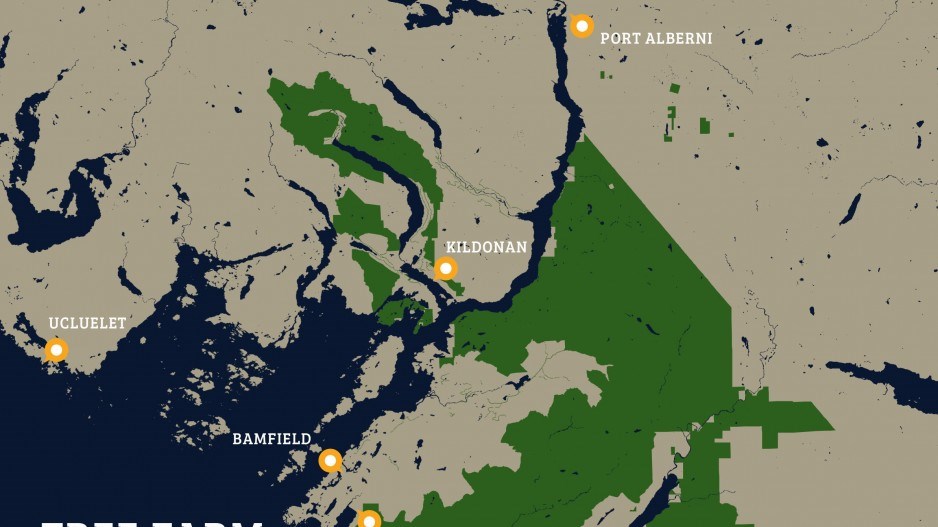When the B.C. government announced one month ago that it would defer logging on 2.6 million hectares of old growth forests, it also gave First Nations 30 days to indicate whether or not they agree with the deferrals.
The Huu-ay-aht now has an answer for the government: It disagrees with the deferrals, and it will make its own decisions on how it manages its own treaty lands.
And while the Huu-ay-aht have agreed not to log 96% of old growth identified in a two-year deferral, it can’t agree not to log 645 hectares, which is 4% of the forest under the two-year deferral.
“As a modern treaty nation, Huu-ay-aht will decide how best to manage our lands and resources,” hereditary Chief Derek Peters said in a press release.
Based on a review of maps provided by the provincial government, the Huu-ay-aht say their own analysis concludes that, of the 153,773 hectares of productive forests on their own treaty lands and in Tree Farm Licence 44 – which they own a 35% stake in -- 51,240 hectares is old forest.
"We have now confirmed that 33 per cent, not three per cent, of our Hahuułi (territory) and TFL 44 is old growth,” Chief Coun. Robert Dennis Sr. said in a press release.
That 3% estimate was arrived at by three independent researchers in a study, B.C’s Old Growth Forests: A Last Stand for Biodiversity.
That report estimated that, of the 13.2 million hectares of old forests in B.C., only only 3% (35,000 hectares) was productive forest capable of producing the growth of giant, ancient and rare trees.
The three researchers were appointed the B.C. government’s five-person Old Growth Advisory Panel. Based on the panels’ recommendations, the B.C. government announced November 2 it would defer logging on 2.6 million hectares of old growth.
The 3% estimate was later contested by a report, commissioned by the Council of Forest Industries (COFI).
That report, by Forsite Consultants, used the provincial government’s Provincial Site Productivity Layer map to concluded that old growth made up 30% of B.C. productive forests, not 3%. The Huu-ay-aht’s own analysis has come to a similar estimate.
Even before the provincial government announced a moratorium on logging of 2.6 million hectares of old growth, the Huu-ay-aht, Pacheedaht, Ditidaht and B.C. government agreed to temporary two-year deferrals on two areas on Vancouver Island: Fairy Creek and Central Walbran. The Fairy Creek area is where protests -- which have resulted in hundreds of arrests -- have taken place.
After completing its own analysis, the Huu-ay-aht have concluded that, while it can defer logging on 96% of that forest land under the two-year deferral, there is 4% -- 645 hectares -- that it can’t afford not to log.
“Approving the remaining 4 per cent of the TAP deferral request would have a significant adverse impact on workers, earnings, and the Nation that goes far beyond any incremental ecological benefit,” the Huu-ay-aht say.
“Because of how these proposed deferral areas are distributed, they put as much as 65 per cent of planned harvest volume over the next two years in serious jeopardy.”
The Huu-ay-aht are working on an integrated resource management plan, which is estimated to be in place by 2023. That plan will inform the Huu-ay-aht’s decision-making on logging going forward.
“By approving 96 per cent of the TAP old growth recommendation, much of which is already protected under existing conservation measures or not planned for harvest in the next two years, we are satisfied that sufficient old forest is protected, while we complete our two-year integrated resource management planning process and make our long-term forest and resource stewardship decisions,” Dennis said.
@nbennett_biv




